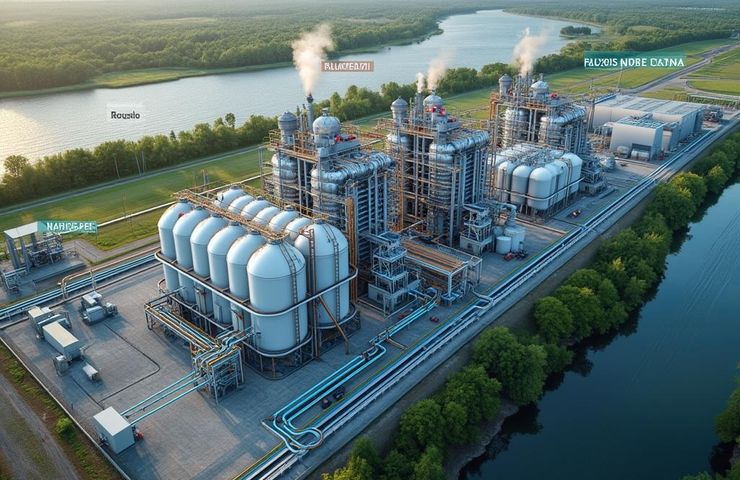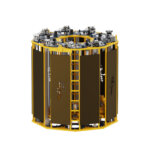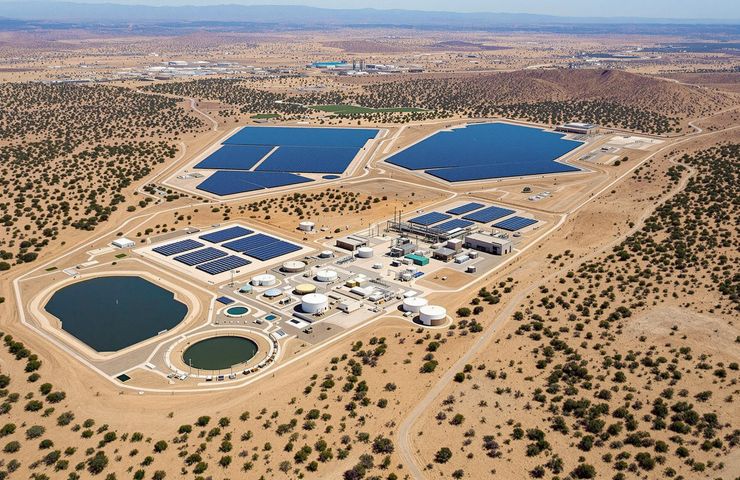Linde Invests $400M to Power Blue Ammonia Production at Louisiana Clean Energy Hub
Linde invests $400M in a major air separation unit in Louisiana to support the Blue Point low-carbon ammonia project, advancing hydrogen infrastructure and clean ammonia exports.


Massive Clean Ammonia Investment Lands in Louisiana
Linde plc is doubling down on the Gulf Coast’s clean energy future with a massive investment — over $400 million — to build and run a cutting-edge Air Separation Unit (ASU) in Ascension Parish, Louisiana. Slated to start operations before 2029, the plant will supply high-purity oxygen and nitrogen for what’s shaping up to be one of the world’s biggest clean ammonia projects: Blue Point Number One.
Teaming Up for a Cleaner Future
This ASU is a key piece of a long-term supply deal between Linde and the Blue Point Number One joint venture — made up of CF Industries, JERA, and Mitsui & Co.. The massive upcoming ammonia facility will call the RiverPlex MegaPark home — a sprawling 17,000-acre industrial site along the Mississippi River. The goal? Pump out 1.4 million metric tons of low-carbon ammonia every year starting in 2029. The plant will lean on standout tech — including Autothermal Reforming (ATR) and Carbon Capture and Storage (CCS) — to capture up to 95% of the CO2 it produces, slashing emissions in a big way.
How It All Comes Together
Here’s the magic: the ASU generates pure oxygen to feed the ATR process, which converts natural gas into hydrogen and carbon dioxide. That CO2 doesn’t just float off into the air — it gets captured and stored underground. The nitrogen from the ASU then combines with the hydrogen, producing ammonia. That whole chain of events turns traditional “grey” ammonia into low-carbon “blue ammonia,” a much cleaner alternative.
Why This Project Really Matters
In regions like Asia, which are hungry for energy and looking to clean up their power and maritime sectors, clean ammonia is gaining serious attention — not just as fertilizer, but as a green fuel. For JERA and Mitsui, this project means they can tap into U.S. production to meet rising sustainability demands back home. For CF Industries, it’s about turning the U.S.’s vast natural gas reserves into clean exports. And for Linde, it’s another big step in expanding its Gulf Coast presence — building on the momentum from its Geismar syngas plant that came online in 2020.
Why Louisiana? Why Now?
Ascension Parish checks all the right boxes for a clean energy boom: it has pipelines, a deep pool of skilled labor, and a regulatory environment that welcomes innovation. The Mississippi River corridor, long known for heavy manufacturing and refining, is now turning into a launchpad for the next wave of industrial decarbonization. Just take a look at the RiverPlex MegaPark — it’s already attracted a $6 billion steel mill from Hyundai, and with the addition of the Blue Point plant and Linde’s ASU, the area is only becoming more of a magnet for green industry.
Big Gains for the Economy and the Environment
- Massive Investment: Together, Linde’s ASU and the Blue Point plant will bring in over $4.4 billion in new infrastructure.
- Job Creation: Expect hundreds of new jobs — directly and indirectly — along with a nice bump in local tax revenues and economic growth.
- Pushing Sustainability Forward: This setup will be among the most advanced carbon capture-driven ammonia facilities anywhere, setting a new global bar for hydrogen production and clean ammonia.
Heavy Hitters, Bold Moves
Let’s be clear — this isn’t just a one-off project. It’s part of a bigger wave that’s picking up speed. What we’re seeing is large-scale collaboration, where industrial gases, clean fuels, and infrastructure all come together. As one analyst put it, “Nobody’s waiting around for perfect policy; companies are making moves now — and they’re thinking big.”
Connecting the Dots
Linde’s latest investment reveals something important: the shift toward hydrogen infrastructure and clean ammonia isn’t just theory anymore — it’s happening at full scale. Clean ammonia is breaking out of its fertilizer-only box to power ships and fuel grid electricity, with real-world infrastructure backing it up.
What’s Next?
So, can the Blue Point project stick the landing by 2029? That’s the plan. If it delivers, this won’t just be a big win for the companies or Louisiana — it’ll show the world that industrial decarbonization is gaining traction, and that America’s clean hydrogen and ammonia exports are ready to compete globally. A lot of eyes will be watching how this evolves — and what it sparks next.
What's Your Reaction?



























































